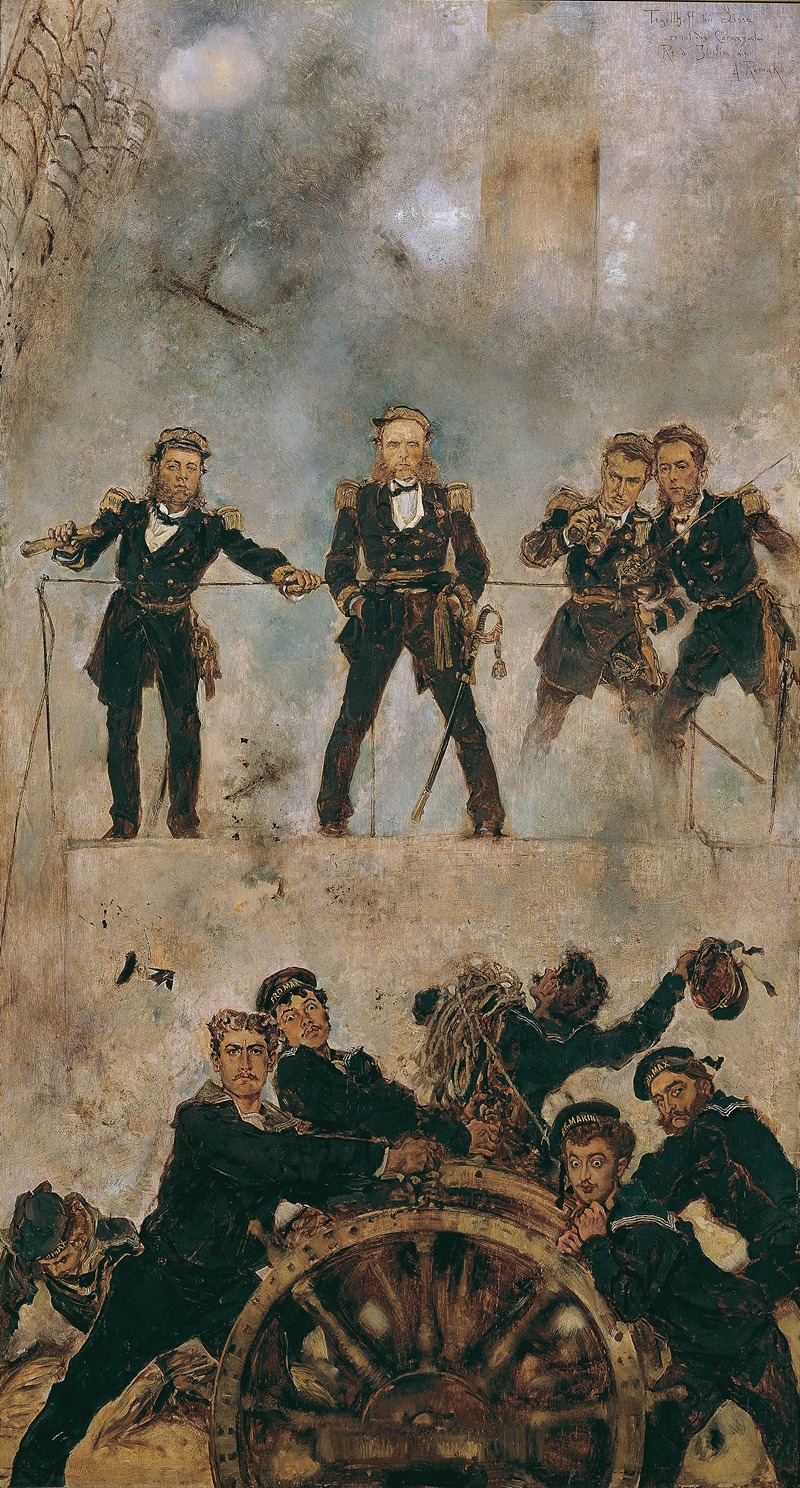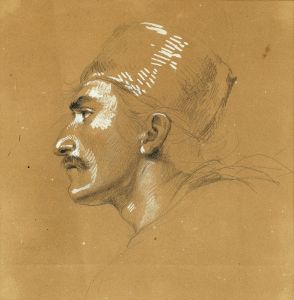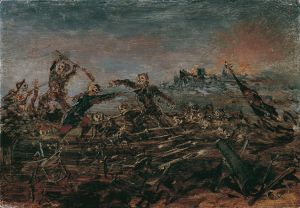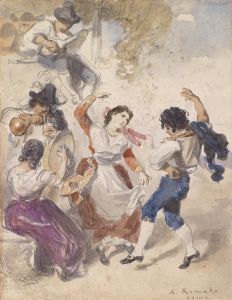
Tegetthoff in der Seeschlacht bei Lissa I
A hand-painted replica of Anton Romako’s masterpiece Tegetthoff in der Seeschlacht bei Lissa I, meticulously crafted by professional artists to capture the true essence of the original. Each piece is created with museum-quality canvas and rare mineral pigments, carefully painted by experienced artists with delicate brushstrokes and rich, layered colors to perfectly recreate the texture of the original artwork. Unlike machine-printed reproductions, this hand-painted version brings the painting to life, infused with the artist’s emotions and skill in every stroke. Whether for personal collection or home decoration, it instantly elevates the artistic atmosphere of any space.
"Tegetthoff in der Seeschlacht bei Lissa I" is a notable painting by Austrian artist Anton Romako, created in 1878. The artwork depicts the Battle of Lissa, a significant naval engagement that took place on July 20, 1866, during the Austro-Prussian War. This battle was fought between the Austrian Empire and the Kingdom of Italy in the Adriatic Sea near the island of Lissa (now Vis, Croatia).
The painting captures the dramatic and chaotic scene of the battle, focusing on Admiral Wilhelm von Tegetthoff, the commander of the Austrian fleet. Tegetthoff is renowned for his aggressive tactics and leadership during the battle, which resulted in a decisive Austrian victory despite being outnumbered by the Italian fleet. The painting portrays Tegetthoff on the deck of his flagship, SMS Erzherzog Ferdinand Max, as he leads his forces with determination and strategic acumen.
Romako's work is characterized by its vivid depiction of the tumultuous sea battle, with swirling waters, billowing smoke, and the intense action of the naval engagement. The painting reflects the Romantic style, emphasizing the heroism and drama of the historical event. Romako's attention to detail and dynamic composition effectively convey the tension and energy of the battle, making it a compelling representation of 19th-century naval warfare.
The Battle of Lissa was significant for several reasons. It was one of the first major naval battles to involve ironclad warships, marking a transition in naval technology and tactics. Tegetthoff's use of ramming tactics, where ships were used as weapons to collide with and damage enemy vessels, was a notable feature of the battle and contributed to the Austrian victory. The success of the Austrian fleet under Tegetthoff's command bolstered the morale of the Austrian Empire and secured its control over the Adriatic Sea.
Anton Romako, the artist, was an Austrian painter known for his historical and genre scenes. Despite his talent, Romako struggled to gain recognition during his lifetime, and his work was often overshadowed by the more popular academic styles of the time. However, his paintings, including "Tegetthoff in der Seeschlacht bei Lissa I," have since been appreciated for their emotional depth and innovative approach to composition and subject matter.
Today, Romako's painting serves as both a historical document and an artistic achievement, offering insight into the naval history of the 19th century and the artistic trends of the period. It remains an important piece in the collection of Austrian art, reflecting the national pride and historical significance of the Battle of Lissa. The painting is housed in the Heeresgeschichtliches Museum (Museum of Military History) in Vienna, where it continues to be admired by visitors and scholars alike for its historical and artistic value.


















